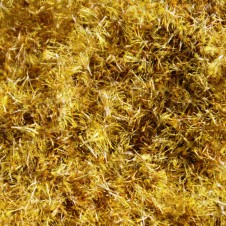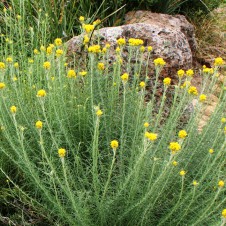General Description: A tufted, perennial, mid-green to pale grey-green herb with erect, leafy stems to 1 m tall. Flower is made up of a number of bright yellow, globular flower heads, clustered at the stem tips.
Flowers and Fruit: Small yellow flowers in terminal clusters, flowers from September to May. Seeds are small and blow in the wind.
Site Preference and Tolerances: Will grow on slightly disturbed ground and in shallow dry soils. Will grow on all soil types except for those that are subject to flooding. This species is often found on dry slopes and on shallow disturbed soils but will also grow on moist soils.
Life Span: Moderate growth rate and short-lived (less than 20 years).
Wildlife Value: Flowers for a very long period of time providing food for insects and birds throughout this prolonged period. Good butterfly food plant, for example used by Australian Painted Lady butterflies.
Other Values and Uses: A very decorative and useful flowering perennial herb that provides clusters of bright yellow cheerful summer flowers and attractive grey foliage. Cut back in early autumn at least every second year after flowering and seeding for a more conventional ornamental effect.
May be used for fodder and as an excellent cut flower. Pick in bud and hang upside down to dry. Very effective in mass plantings and ideal for use in mixed borders, rockeries and cottage style gardens.
Other Scientific Names: Helichrysum semipapposum
Germination Information: Sow seed in autumn and should have good results in one month. Light will give increased germination so only cover lightly with soil.


